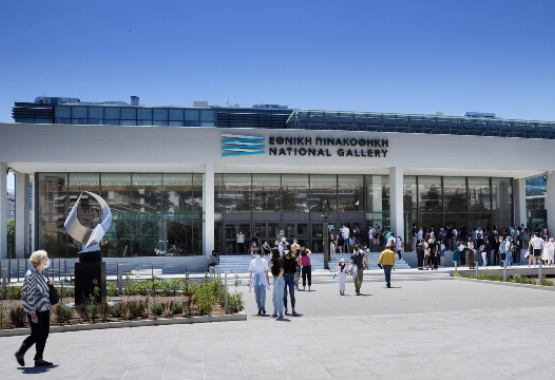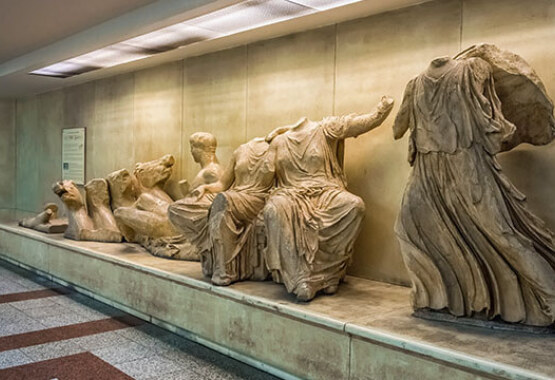
ATHENS
Today’s Observatory Experience
The Visitor Centre at Thissio offers an exciting learning experience to guests of all ages. You can explore the Geoastrophysics Museum, which houses a vast collection of scientific instruments from the 19th and 20th centuries. Don’t miss the observatory’s impressive library, where you’ll find rare books and historical documents that offer insight into the rich history of Greek astronomy. A special highlight is the original 16cm telescope located under the dome of the Sina building; it was used by Julius Schmidt, the third Director of the Observatory, to draw the most accurate map of the Moon in the 19th century.
Must-See: The Doridis Telescope
No visit to the National Observatory of Athens is complete without seeing the Doridis Telescope. It is housed in a round structure near the main building. Are you ready for the stars? Join an evening session and gaze at the night sky through the telescope lens. It’s a memorable experience!
Historical Facts
The National Observatory of Athens was built by Baron Sinas, a prominent Austrian-Greek philanthropist. The son of a wealthy family that founded the Bank of Austria and Europe’s first railway, funded the observatory's construction, which was completed in 1846. Designed by the renowned Danish architect Theophil Hansen, the main building was shaped like an "X", with each wing perfectly aligned with the four points of the horizon.
As the first research centre in Greece and Southeast Europe, the National Observatory served as a beacon of scientific discovery in the region for nearly two centuries. From its inauguration, it began shaping the future of Greek astronomy, with the installation of Greece’s first telescope in 1902.
Fun Fact: Setting the Time for Greece
Until the mid-1960s, the official time in Greece was set by the Observatory. Using the Sygrou Telescope, astronomers would determine the exact time.
A visit to the National Observatory of Athens will offer you scientific and historical information on the site, as well as breathtaking views to the surrounding archaeological sites. Enjoy this unforgettable trip through time and space at the NOA.
For more information please click here.
National Observatory of Athens
Discover the Wonders of the Sky
The National Observatory of Athens (NOA) is a must-visit destination for science enthusiasts and history lovers alike. It was established in 1842 as the first research centre in Greece and Southeast Europe, in the fields of astronomy, geophysics, seismology, and meteorology. Let’s find out more about this iconic venue sitting atop the ancient Hill of the Nymphs, which affords stunning views of the Parthenon and the ancient Athens area, and let’s also learn some fun facts about its past and present.Today’s Observatory Experience
The Visitor Centre at Thissio offers an exciting learning experience to guests of all ages. You can explore the Geoastrophysics Museum, which houses a vast collection of scientific instruments from the 19th and 20th centuries. Don’t miss the observatory’s impressive library, where you’ll find rare books and historical documents that offer insight into the rich history of Greek astronomy. A special highlight is the original 16cm telescope located under the dome of the Sina building; it was used by Julius Schmidt, the third Director of the Observatory, to draw the most accurate map of the Moon in the 19th century.
Must-See: The Doridis Telescope
No visit to the National Observatory of Athens is complete without seeing the Doridis Telescope. It is housed in a round structure near the main building. Are you ready for the stars? Join an evening session and gaze at the night sky through the telescope lens. It’s a memorable experience!
Historical Facts
The National Observatory of Athens was built by Baron Sinas, a prominent Austrian-Greek philanthropist. The son of a wealthy family that founded the Bank of Austria and Europe’s first railway, funded the observatory's construction, which was completed in 1846. Designed by the renowned Danish architect Theophil Hansen, the main building was shaped like an "X", with each wing perfectly aligned with the four points of the horizon.
As the first research centre in Greece and Southeast Europe, the National Observatory served as a beacon of scientific discovery in the region for nearly two centuries. From its inauguration, it began shaping the future of Greek astronomy, with the installation of Greece’s first telescope in 1902.
Fun Fact: Setting the Time for Greece
Until the mid-1960s, the official time in Greece was set by the Observatory. Using the Sygrou Telescope, astronomers would determine the exact time.
A visit to the National Observatory of Athens will offer you scientific and historical information on the site, as well as breathtaking views to the surrounding archaeological sites. Enjoy this unforgettable trip through time and space at the NOA.
For more information please click here.




